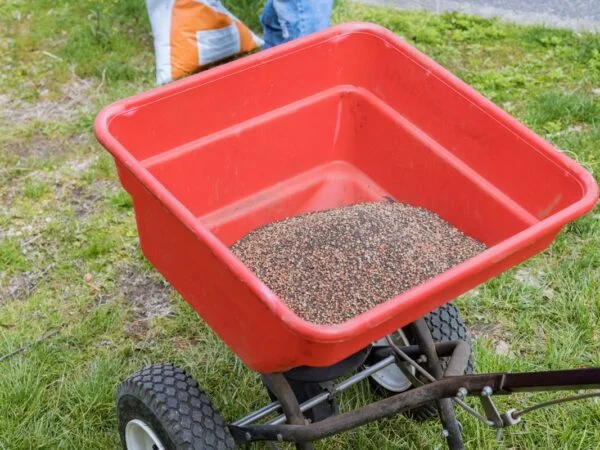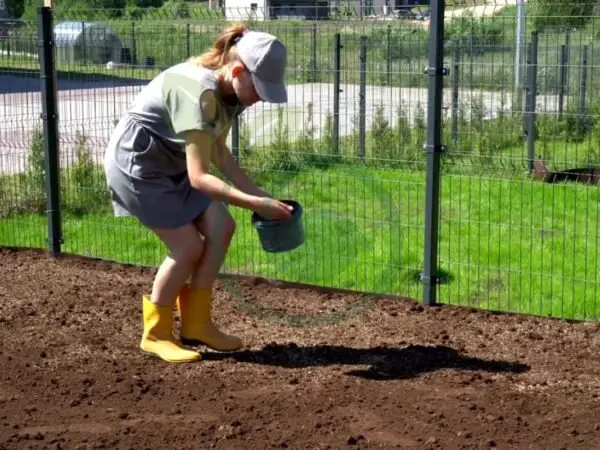Want your grass seed to thrive? Choosing the best time of day to water it is crucial. Timing can make or break your lawn's success. But when exactly is the optimal time?
Key Takeaways
- Water in the morning: The best time to water grass seed is in the morning to reduce evaporation and allow the soil to absorb moisture effectively.
- Prepare the soil: Ensure proper pre-plantation preparation by loosening the soil, removing debris, and creating a good seedbed for optimal grass seed growth.
- Monitor post-plantation care: After planting grass seed, provide immediate care by keeping the soil consistently moist but not waterlogged to support germination.
- Adjust watering frequency: Before and after germination, adjust watering frequency based on weather conditions, avoiding overwatering or underwatering to promote healthy grass growth.
- Consider seasonal variations: Adapt your watering schedule based on weather and seasons, with cooler season grasses requiring less water compared to warm season varieties.
- Implement advanced techniques: Explore advanced watering techniques like deep watering and infrequent but thorough irrigation to encourage deep root growth and drought resistance in your lawn.
Understanding Grass Seed Watering
Watering Frequency
Adjust watering frequency based on weather conditions. Monitor rainfall to determine when to water grass seed. Gradually reduce watering frequency as grass seeds germinate.
Optimal Watering Amount
Provide 3-4 inches of water per week for new grass seed. Water seedlings 2 to 3 times a day for 5 to 10 minutes each time. Increase watering duration to 40 minutes once a day after germination.
Signs of Over-Watering
Look for waterlogged soil that can suffocate seeds. Watch for yellowing or wilting grass due to excess water. Be cautious of mold growth caused by excessive moisture.
Best Watering Times
Morning vs Evening
- Water your grass seed in the early morning or late afternoon to minimize evaporation.
- Avoid watering at night to prevent mold growth and ensure optimal absorption.
- Choose times based on heat levels during the day for maximum effectiveness.
Minimizing Evaporation
- Spread straw mulch before watering to prevent moisture loss through evaporation.
- Water before and after peak heat hours to allow for better soil absorption.
- Installing sprinklers with timers can help in maintaining an efficient watering schedule.
Seasonal Adjustments
- Adjust your watering frequency according to seasonal changes to meet the varying needs of the grass seed.
- Take into account temperature fluctuations when deciding on the best time to water your lawn.
- Adapt your watering practices for different seasons such as summer, fall, and winter.
Pre-Plantation Preparation
Soil Readiness
Preparing the soil before planting grass seed is crucial for successful growth. Ensure the soil has adequate moisture content to support germination and early growth stages. Check that the soil is well-drained to prevent waterlogging, which can hinder root development.
To determine if the soil is ready for seeding, conduct a simple test to assess its quality. Adjust your watering schedule based on the results of this test. It's essential to create optimal conditions for seed germination by providing the right amount of moisture.
Seed Selection
Selecting the right grass seed plays a vital role in establishing a healthy lawn. Consider your climate and soil type when choosing seeds. Opt for varieties that are well-suited to your region's weather patterns and environmental conditions.
Drought-resistant seed varieties are an excellent choice for areas with limited water availability. These seeds require less water while still maintaining their lush appearance. Choosing high-quality seeds ensures better germination rates and overall lawn health.
Immediate Post-Plantation Care
Initial Watering
After planting grass seed, ensure to water it immediately but gently to avoid displacing the seeds. The best time for initial watering is early morning or late afternoon when temperatures are cooler. This helps prevent evaporation and allows the water to penetrate the soil effectively.
For the first few weeks after planting, keep the soil consistently moist but not soggy. This aids in seed germination and root development. Avoid overwatering as it can lead to rotting of seeds or fungal diseases.
Soil Moisture Maintenance
To maintain soil moisture levels, consider using a sprinkler system or soaker hose for even distribution of water. Regularly check the moisture level by inserting your finger into the soil - if it feels dry, it's time to water again.
Adequate moisture is crucial for grass seed growth, so ensure that the top inch of soil remains moist at all times. Mulching can help retain moisture and protect seeds from drying out due to excessive sunlight exposure.
Watering Before and After Germination
Pre-Germination Care
Before the grass seed germinates, watering is crucial to ensure proper moisture levels for optimal growth. It's essential to keep the soil consistently moist but not waterlogged to support germination. Overwatering can lead to rotting seeds, so moderation is key.
Ensure that the top inch of soil remains damp by watering lightly once or twice a day. Avoid heavy watering sessions that can wash away seeds or create puddles on the surface. Consider using a fine mist setting on your hose nozzle for gentle watering.
Post-Germination Schedule
After germination, adjust your watering schedule by providing deeper but less frequent watering sessions. Water deeply every few days rather than lightly every day to encourage deep root growth. This helps establish a strong and healthy lawn.
Monitor the soil moisture regularly by checking the top few inches of soil before each watering session. Adjust the frequency based on weather conditions; during hot and dry periods, you may need to water more frequently. Remember that consistency is key for healthy grass growth.
Adjusting for Weather and Seasons
Summer Tips
During summer, it's crucial to water grass seed in the early morning or late evening. The timing is essential to prevent evaporation. Watering in the afternoon can lead to water loss due to high temperatures. To ensure optimal growth, aim for consistency in watering times throughout the season.
To combat the scorching heat, provide adequate moisture by watering more frequently but with less volume each time. This approach helps prevent the soil from drying out and supports healthy grass seed germination. Consider using a soaker hose or sprinkler system for even distribution of water across your lawn.
Winter Care
In winter, adjust your watering schedule based on weather conditions. During colder months, reduce the frequency of watering as grass seed requires less moisture due to slower growth rates. Avoid overwatering as excess moisture can lead to fungal diseases that thrive in damp environments.
When temperatures drop below freezing, it's crucial to avoid watering altogether as frozen ground cannot absorb water effectively. Wait until temperatures rise above freezing before resuming your watering routine. Monitor weather forecasts regularly and adapt your watering schedule accordingly to promote successful grass seed growth during winter.
Cool vs Warm Season Grasses
Watering Differences
Cool season grasses like fescue and ryegrass require more frequent watering compared to warm season varieties. These grasses thrive in cooler temperatures, needing consistent moisture for optimal growth.
On the other hand, warm season grasses such as bermudagrass and zoysiagrass are more drought-tolerant. They need less water overall and can withstand longer periods without irrigation.
Growth Patterns
Cool season grasses experience their peak growth during the cooler months of spring and fall. This is when they benefit most from regular watering to support their active growth phases.
In contrast, warm season grasses grow vigorously in the summer heat but slow down during the cooler months. Adjusting your watering schedule to match these growth patterns ensures that your grass receives adequate moisture at the right times.
Advanced Watering Techniques
Automated Systems
Automated irrigation systems are convenient for watering grass seed at the best time of day. They can be programmed to water early in the morning, typically between 4 am and 10 am. This timing ensures that the soil absorbs moisture before the heat of the day evaporates it.
Installing a timer-controlled sprinkler system is beneficial for maintaining consistent moisture levels required for germinating grass seeds. These systems can distribute water evenly across large areas, promoting uniform growth. They reduce manual labor and ensure that watering occurs even when you're not around.
Manual Methods
For those who prefer a hands-on approach, manual watering methods can also be effective in nurturing newly sown grass seed. Using a hose with an adjustable nozzle allows for targeted watering, ensuring that seeds receive adequate moisture without being drowned or washed away.
One manual technique involves using a pulsating sprinkler attached to a hose. This type of sprinkler mimics natural rainfall by delivering water in bursts, preventing runoff and allowing time for absorption into the soil. It's essential to move the sprinkler periodically to cover all areas uniformly.
Another effective manual method is drip irrigation, which provides slow and steady moisture directly to the root zone of grass seeds. This method conserves water by minimizing evaporation and runoff while promoting deep root growth. Drip irrigation systems are versatile and can be customized based on specific lawn requirements.
Maintaining Your Lawn
Regular Monitoring
Regularly check the moisture level of your soil to ensure it remains consistently damp. This is crucial, especially during the germination phase of your new lawn. Use a screwdriver or stick to gauge how deep the moisture penetrates into the ground. Keep an eye on any signs of overwatering or underwatering, such as puddles or dry patches.
Adjust your watering schedule based on weather conditions and the specific needs of your seeded lawn. Grass seed requires consistent moisture to thrive, so be attentive to any changes in temperature or rainfall patterns. Consider investing in a rain gauge to accurately measure precipitation levels and adjust your watering accordingly.
Adjusting Practices
Make sure to water early in the morning when temperatures are cooler and there is less wind. This helps prevent evaporation and ensures that water reaches the roots effectively. Avoid watering in the evening as this can promote fungal growth due to prolonged moisture on the grass blades.
To promote deep root growth, water deeply but infrequently rather than frequent shallow watering sessions. This encourages healthy lawn development by encouraging roots to grow deeper into the soil for better drought resistance. Consider using a pulsating sprinkler for even coverage across your entire yard.
Closing Thoughts
Now that you have a solid understanding of the best time to water grass seed, pre-plantation care, post-plantation maintenance, and advanced watering techniques, you are well-equipped to nurture a lush, healthy lawn. Remember to tailor your watering schedule based on the type of grass you have and the prevailing weather conditions. By following these guidelines and adjusting your watering practices accordingly, you can ensure optimal growth and vitality for your grass seed.
Take charge of your lawn's health by implementing these expert tips. Consistent watering at the right times will set the foundation for a vibrant and thriving lawn. Your dedication to proper watering techniques will pay off with a beautiful, green landscape that you can enjoy for years to come.
Frequently Asked Questions
When is the best time of day to water grass seed?
Early morning or late afternoon is ideal for watering grass seed. This timing helps prevent evaporation and allows the water to penetrate deeply into the soil, promoting healthy root growth.
How can I adjust my watering schedule based on weather conditions?
During hot and dry weather, increase watering frequency but reduce duration to keep the soil consistently moist. In cooler or rainy periods, adjust by reducing watering frequency while ensuring the soil doesn't dry out completely.
Should I water newly planted grass seeds differently before and after germination?
Yes, before germination, lightly mist the area several times a day to keep it moist. After germination, transition to deeper but less frequent watering sessions to encourage stronger root development.
What are some advanced techniques for watering grass seed effectively?
Consider using oscillating sprinklers for even coverage, creating moisture-retaining mulch with straw or peat moss, and investing in a timer system for consistent watering intervals that suit your specific grass type.
Why is it important to maintain a consistent lawn-watering routine?
Consistency in lawn-watering helps establish strong roots, prevents drought stress or overwatering issues, improves overall turf health and appearance, and ensures long-term sustainability of your lawn's lush greenery.
Image Source: Paid image from CANVA




